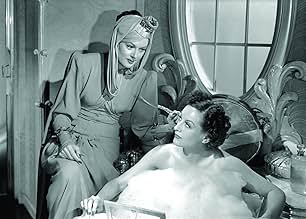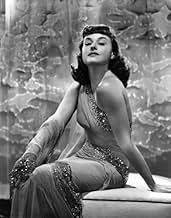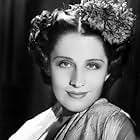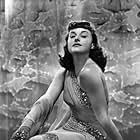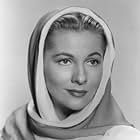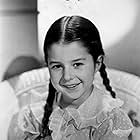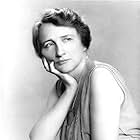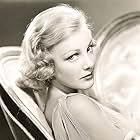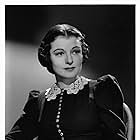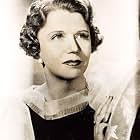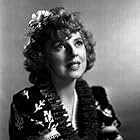A study of the lives and romantic entanglements of various interconnected women.A study of the lives and romantic entanglements of various interconnected women.A study of the lives and romantic entanglements of various interconnected women.
- Awards
- 2 wins
Storyline
Did you know
- TriviaThere are more than 130 roles in this movie, all played by women. Phyllis Povah, Marjorie Main, Mary Cecil and Marjorie Wood originated their roles in the play, which opened September 7, 1937, and had 666 performances at New York City's Ethel Barrymore Theatre--a Broadway run which, unusually but quite proudly, is displayed in the movie's opening credits. No doubles were used in the fight sequence where Rosalind Russell bites Paulette Goddard. Despite the permanent scar resulting from the bite, the actresses remained friends.
- GoofsThe second model to enter for the fashion show is wearing a top with red spots (possibly strawberries) and a red skirt. After the cut she's wearing a top with red and blue stripes and a white skirt.
- Quotes
Crystal Allen: There's a name for you ladies, but it isn't used in high society... outside of a kennel. So long, ladies!
- Crazy creditsIn the opening credits, before the photo images of the actresses are shown, their characters are revealed by images of various animals.
- Alternate versionsThere is an Italian edition of this film on DVD, distributed by DNA Srl: "VOLTO DI DONNA (1941) + DONNE (1939) + STRANGE CARGO (1940)" (3 Films on a single DVD), re-edited with the contribution of film historian Riccardo Cusin. This version is also available for streaming on some platforms.
- ConnectionsFeatured in From the Ends of the Earth (1939)
- SoundtracksForevermore
(1939) (uncredited)
Music by Edward Ward
Lyrics by Chet Forrest and Bob Wright
Played at the end and sung by an offscreen chorus
Featured review
It's funny to read people arguing "The Women" is a flawed movie because it no longer speaks to who or what women are today. Does the same metric apply to "The Scarlet Letter" or "Anna Karenina"? Of course not. They are timeless classics. So is "The Women".
The setting is Manhattan, at a time when women enjoyed some newly acquired independence but still had to find their way in a world built by and for men. Mary Haines (Norma Shearer) treasures the company of her loving husband, but the wool is rather roughly pulled from her eyes and she is left to discover he's been stepping out with shopgirl Crystal Allen (Joan Crawford).
What makes "The Women" great? Having an entire film with no male characters is a cool trick, but doesn't guarantee re-watchability. What clicks starts with a zesty, witty script, written by Anita Loos and Jane Murfin from a Claire Booth play. It doesn't conceal the hurt of marital separation so much as send up the associated entanglements stirred up by an idle, jealous set that holds court over Mary's world.
At its vortex, more essential to the comedy's success than either Crawford or Shearer, is Rosalind Russell's performance as Mary's conniving cousin Sylvia Fowler. She shouldn't be so enjoyable, but she is. When you think of it, Sylvia's by far the nastiest character in the film. At least Crystal has a profit motive. "You can't bear Mary's happiness" is how one bystander puts it to Sylvia, and she's right.
Russell's ability to seize the comic high ground throughout, mugging up a storm, taking pratfalls, and even biting Paulette Goddard's calf, goes a large way to making "The Women" such a blast. Russell's as much fun as Olivier was playing Richard III, twisting Mary into a pointless confrontation with Crystal with her cruel dig: "No doubt that girl will make a perfectly good stepmom for your daughter." But just try hating Sylvia. You can't!
I relish the whole cast. It's quite a large one, Dickens-like not only in mass but in the number of distinctive characterizations. It's not an especially deep story, though there are emotional resonances and points worth discussing and debating. That goes especially for Mary's parleys with her mother (Lucile Watson), who tells her to ignore hubby's affair and "keep still". The mother wishes times were simpler, and women didn't have the option of not tolerating a husband's infidelity. You can question the rationale, but their scenes have impact.
Shearer has the toughest job in the film playing the good-hearted victim. She's not as self-conscious there as her critics say; she's limited not by her talent but by the script. She can't even play it too naive as Joan Fontaine has that territory sewn up as Mary's gentlest friend. So Shearer works it down the middle, milks some tears, and hangs around long enough to deliver the film's greatest line, one you know already if you've seen it. And she nails it...purrfectly.
Crawford is surprisingly absent for much of the film, given she has second billing. She does make every scene she's in count. Mary Boland is a wonderfully affected older woman married and dropped by a parade of husbands - including one who pushed her off a mountain. Even Goddard, more pretty than talented in roles I've seen of hers, crafts an effective identity as a Crystal-like character who winds up one of Mary Haines' sisters-in-arms.
The more I see "The Women", the tougher time I have identifying anything really not good about it. Even a lengthy fashion show, a segment that was shot in Technicolor and which director George Cukor is on record regretting, doesn't feel off-the-beam. I love watching Russell in her glasses knitting and pretending not to be bothered by the pretty models she believes are competing for her husband's attention.
There's just a lot to see and enjoy with "The Women". What can I say? I'm a guy. I suspect any woman giving this half a chance will have even more fun than I did.
The setting is Manhattan, at a time when women enjoyed some newly acquired independence but still had to find their way in a world built by and for men. Mary Haines (Norma Shearer) treasures the company of her loving husband, but the wool is rather roughly pulled from her eyes and she is left to discover he's been stepping out with shopgirl Crystal Allen (Joan Crawford).
What makes "The Women" great? Having an entire film with no male characters is a cool trick, but doesn't guarantee re-watchability. What clicks starts with a zesty, witty script, written by Anita Loos and Jane Murfin from a Claire Booth play. It doesn't conceal the hurt of marital separation so much as send up the associated entanglements stirred up by an idle, jealous set that holds court over Mary's world.
At its vortex, more essential to the comedy's success than either Crawford or Shearer, is Rosalind Russell's performance as Mary's conniving cousin Sylvia Fowler. She shouldn't be so enjoyable, but she is. When you think of it, Sylvia's by far the nastiest character in the film. At least Crystal has a profit motive. "You can't bear Mary's happiness" is how one bystander puts it to Sylvia, and she's right.
Russell's ability to seize the comic high ground throughout, mugging up a storm, taking pratfalls, and even biting Paulette Goddard's calf, goes a large way to making "The Women" such a blast. Russell's as much fun as Olivier was playing Richard III, twisting Mary into a pointless confrontation with Crystal with her cruel dig: "No doubt that girl will make a perfectly good stepmom for your daughter." But just try hating Sylvia. You can't!
I relish the whole cast. It's quite a large one, Dickens-like not only in mass but in the number of distinctive characterizations. It's not an especially deep story, though there are emotional resonances and points worth discussing and debating. That goes especially for Mary's parleys with her mother (Lucile Watson), who tells her to ignore hubby's affair and "keep still". The mother wishes times were simpler, and women didn't have the option of not tolerating a husband's infidelity. You can question the rationale, but their scenes have impact.
Shearer has the toughest job in the film playing the good-hearted victim. She's not as self-conscious there as her critics say; she's limited not by her talent but by the script. She can't even play it too naive as Joan Fontaine has that territory sewn up as Mary's gentlest friend. So Shearer works it down the middle, milks some tears, and hangs around long enough to deliver the film's greatest line, one you know already if you've seen it. And she nails it...purrfectly.
Crawford is surprisingly absent for much of the film, given she has second billing. She does make every scene she's in count. Mary Boland is a wonderfully affected older woman married and dropped by a parade of husbands - including one who pushed her off a mountain. Even Goddard, more pretty than talented in roles I've seen of hers, crafts an effective identity as a Crystal-like character who winds up one of Mary Haines' sisters-in-arms.
The more I see "The Women", the tougher time I have identifying anything really not good about it. Even a lengthy fashion show, a segment that was shot in Technicolor and which director George Cukor is on record regretting, doesn't feel off-the-beam. I love watching Russell in her glasses knitting and pretending not to be bothered by the pretty models she believes are competing for her husband's attention.
There's just a lot to see and enjoy with "The Women". What can I say? I'm a guy. I suspect any woman giving this half a chance will have even more fun than I did.
Details
- Release date
- Country of origin
- Languages
- Also known as
- V ženskem carstvu
- Filming locations
- Production company
- See more company credits at IMDbPro
Box office
- Budget
- $1,688,000 (estimated)
- Gross worldwide
- $16,161
- Runtime2 hours 13 minutes
- Color
- Aspect ratio
- 1.37 : 1
Contribute to this page
Suggest an edit or add missing content






